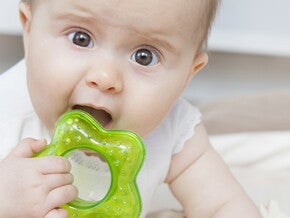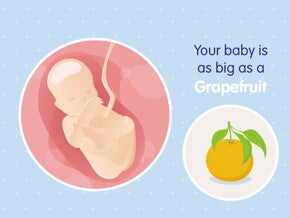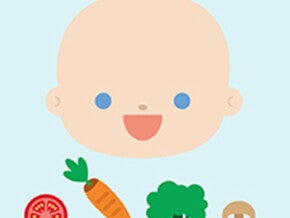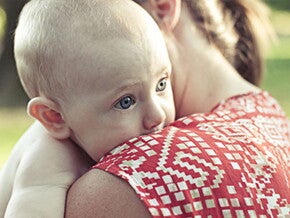
Acceptance and Refusal – 12 to 24 Months
Acceptance and Refusal – 12 to 24 Months
When feeding your baby, understanding how much food he/she needs can be tricky. With a little knowledge and observation, you will easily be able to identify when you have fed your child the appropriate amount of food.
While feeding your baby, understanding how much food he/she needs can be tricky. With a little knowledge and observation, you will easily be able to identify when you have fed your child the appropriate amount of food.
- Too much? Shakes her head or says “no”: Baby refuses to eat? There’s no point insisting… You should try to meet your child’s needs. If they are no longer hungry, don’t force them to eat more.
- Plays or throws her food: Baby throws food off the table? It’s time to stop the havoc! If your baby was hungry, they’d eat the food instead of playing with it.
- Gets distracted easily?: Baby seems in another world? Your baby is probably satisfied. According to their level of activity, the amount your baby eats at each meal may vary from one day to another.
- Covers her mouth with her hands: Baby refuses the spoon? They are probably satisfied. Note what your baby likes to eat and how much and when in a diary. These notes may prove to be useful for visits to the paediatrician.
- Too little? Points, reaches or asks for specific foods: Is your baby fascinated by their food? They may still be hungry. Let your baby eat with their fingers a little to practise independent feeding.
- Too little? Leads you to the fridge or kitchen: Baby wants to set the table? Your baby may still be peckish. It’s not surprising with all these new activities! You can give your baby some treats such as wholegrain rice puffs or a little piece of bread to practise chewing and independent feeding.
Related articles

Safe Food Preparation Principles
Follow these stay-safe principles when you’re shopping or preparing food for your baby.
4 mins to read

How to Increase Baby Immunity with Child-Friendly Foods
Nothing is more painful than seeing your child fall prey to infectious diseases easily.
4 mins to read

Baby constipation - symptoms, causes and treatment
Constipation doesn’t only happen to grown-ups; babies and children get it as well.
2 mins to read

Baby Teething Tips
Teething can be a distressing time for your baby and you too. We’ve put together an action plan of teething tips, so you can all get through it without gritting your teeth.
2 mins to read

The Importance of Eating Together – Family first!
Research has shown that shared family meals—no matter the size of your family—provide benefits for your baby beyond the joy of simply eating dinner together.
5 mins to read

19 weeks pregnant: baby development and diet tips
Your little lodger weighs between 300 and 400 grams – weigh a grapefruit in your hand and that’s about how heavy she is. Read more about this week.
3 mins to read

Babies And Their Grandparents - The Beginning Of A Beautiful Love Story
Grandparents love looking after their grandchildren and can be a great help to you as long as they can retain their freedom! Make the most of this special relationship.
3 mins to read

Need some space? Here’s how to handle visitors after giving birth
If you’re an overwhelmed mom or dad with too many baby visitors, don’t panic. Here’s our top five tips on how to handle visitors after giving birth, giving you time to bond with your baby.
2 mins to read

Balanced Diet Baby – See What Babies eat across the world
Around the world, babies are not eating enough fruits and vegetables, which are essential for a healthy diet.
2 mins to read

Baby Milestones – 12 to 24 Months
A few key milestones in your child’s development.
1 min to read

Developing Healthy Digestive System By Including Probiotics In Your Child's Diet
There are billions of bacteria living in our digestive system.
3 mins to read

The importance of responsive feeding for lifelong health
Did you know? Both pressuring your baby to eat more, or restricting how much she eats, can interfere with her growth.
3 mins to read

Baby Self Feeding – What to Expect?
Gone are the days of spoon-feeding him purées, it’s time to roll out the wipeable mat for your independent eater! Let your toddler lead the way on his adventures in food.
6 mins to read

Baby Poo
Your baby's stools let you know how their digestive system is performing. Telling the difference between "normal" and "abnormal" can be difficult at first, but don't despair.
7 mins to read

10 tips for a sound baby sleep routine
Baby sleep routines can vary enormously, often causing poor parents many sleepless nights. Here are some bedtime routine tips to help your baby sleep through the night.
1 min to read

Playful Learning – The unseen benefits
Did you know? Imaginary play and ‘talking time’ are essential to your baby’s healthy development.
2 mins to read

Baby Blues
You are not alone. Almost two thirds of mothers feel down after childbirth.
4 mins to read

Signs of Baby blues vs postpartum depression
Wondering how to know if I have postnatal depression? You’ve just birthed a human, your whole has been turned upside down, and you haven’t slept for what feels like an age.
4 mins to read

Healthy Baby Snacks On The Go – Get Inspired!
When your baby is hungry in between meals, think about nutrition and balance as you do with main meals. Avoid high-sugar, low-nutrient snacks.
1 min to read